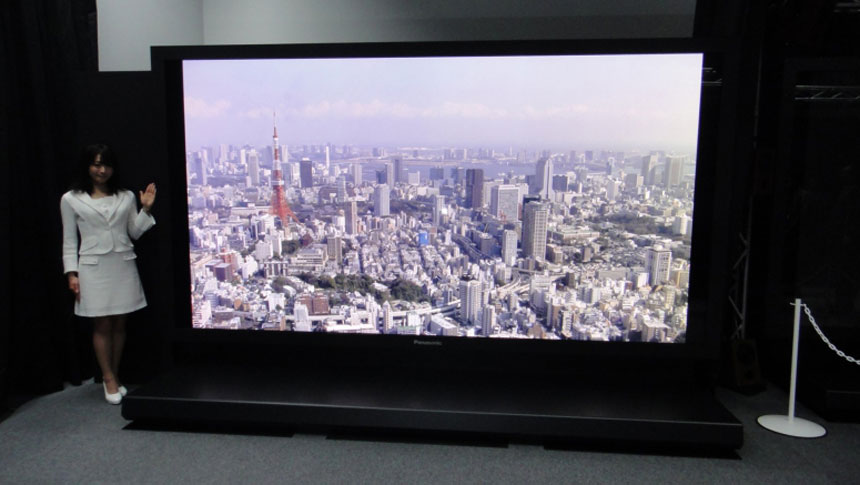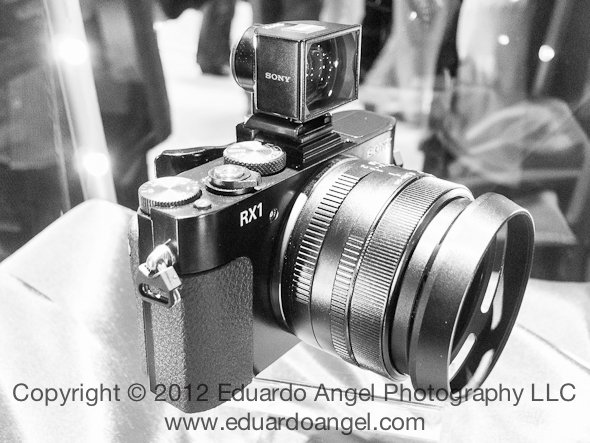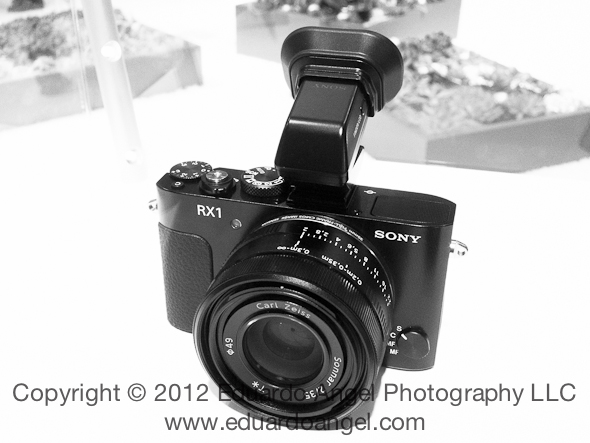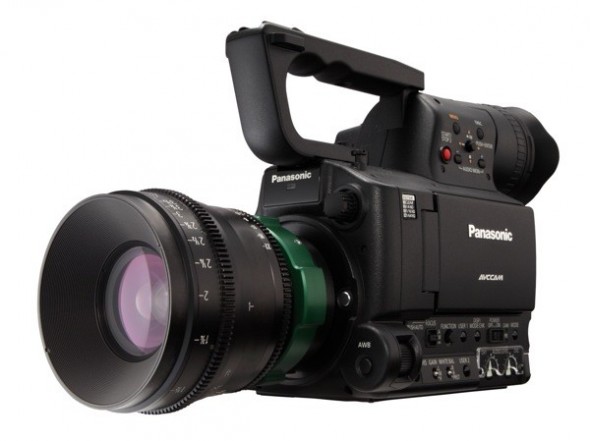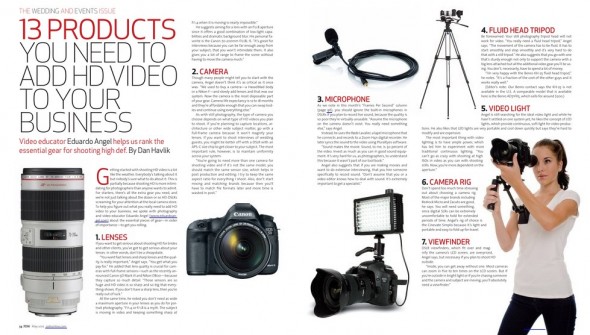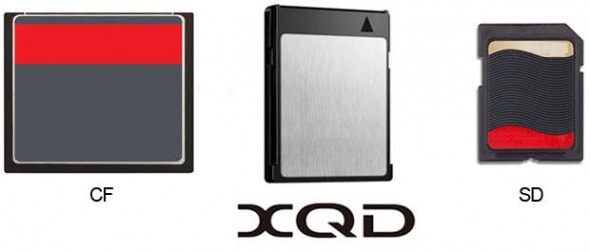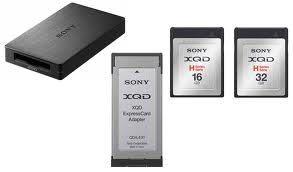Video
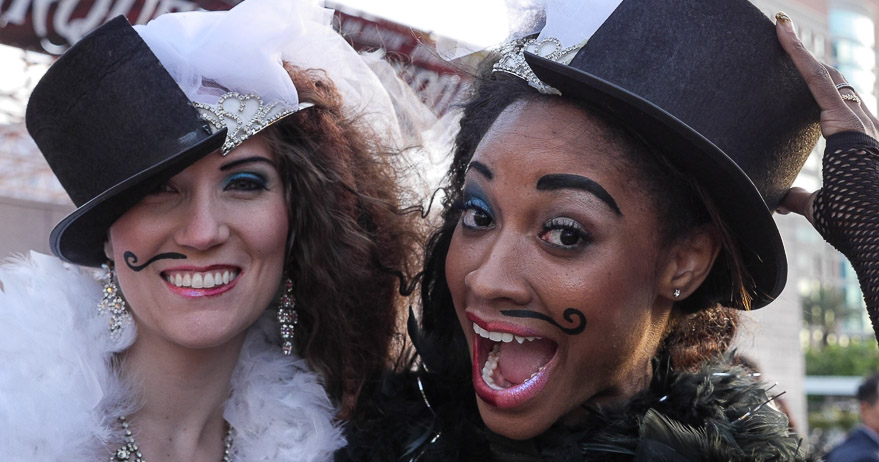
NAB 2016 Announcements.
I’ve been honored to speak at NAB for the past 9 years. A few days ago I was addressed as a “senior” speaker, which feels kinda good but very weird at the same time. One of the many lessons learned is that it’s close to impossible to understand what’s happening in terms of announcements while you are AT the show. There are so many people, so many widgets, and so much noise… It is actually much easier and faster to follow the news and read the reports “from the the trenches” to stay up to date on new toys.
If you are attending the show, I’d love to have you at one of my seminars or simply meet and catch up. I’ll be on Twitter (@EA_Photo) obsessively.
In collaboration with B&H, this year I’m testing two new widgets that are populated automatically; one for Announcements and a second one for B&H specials during the show. I have no idea how this is going to work, but it doesn’t hurt to try. So, here we go!
NAB 2016: Just Announced
NAB 2016: Show Specials
Video
The future ahead of schedule.
NHK 8K World
Less than nine years ago we were all living in a standard definition world. Things were a lot simpler — the broadcast world had something that is now considered a novelty, something called broadcast standards, a set of guidelines that everyone adhered to. Then came high definition, which seemed to turn everything into the wild west. Broadcasters in the U.S. still have no official standard for what constitutes broadcast quality high-definition (HDV is still accepted by quite a few U.S. broadcasters).
So, last year Sony had a tagline for their new F series 4K line of cameras: “the future ahead of schedule.” What Sony didn’t tell you was that this was only a small part of the future. They forgot to mention the 8K cameras they’ve been developing and building with NHK Japan.
Some might be wondering what’s up with 8K, after all, 4K just recently became “a thing.” The fact is that 8K has been around for longer than you think. The London Olympics were shot on NHK 8K cameras and displayed on Panasonic 8K projectors in London.
We got to view the NHK 8K world display at NAB this year. It’s making this list not particularly because we loved it, but because it’s important and whether we like it or not, it is the future.
When Sony is behind something it’s only a matter of time before you’re left with no choice but to deal with it as a reality.
Exhibit A: Red digital cinema was screaming 4K since 2007 and everyone scoffed at it. Sony decided to make 4K a priority last year. In my opinion this was because they needed a new revenue stream after the push for 3-D failed miserably—and guess what, we’re all talking about 4K a year later, and this time it’s a serious conversation. When Sony and Panasonic are behind something together I know enough not to put up a fight.
Exhibit B: AVCHD, the now ubiquitous HD acquisition codec developed jointly by Sony and Panasonic.
We watched an 8K projected demo from NHK at NAB. The first film we saw was meant to demonstrate the mobility of the NHK 8K cube camera, the second was an 8K fashion show, which was followed by a presentation of the Sochi Olympics in 8K and a FIFA confederations cup match.
My gut reaction to most of the stuff was that the resolution was clearly there and for the first time I found myself thinking there is such a thing as too much resolution. It was all rather distracting. I could see everything, and at one point I could make out the brand of cellphone a spectator was holding in the stands at the FIFA confederations cup match. The only application where I thought the 8K resolution was appropriate was for some sporting events. Overall that much resolution looks and feels like staring out the window. There’s absolutely nothing artistic about it.
The part of the 8K display that really made me question the future was a lack of dynamic range. The highlights were clipped, there was no detail in the blacks, and the color reproduction left a lot to be desired. I’ll withhold judgment on 8K and give it the “new technology” pass for now with the hopes that the dynamic range and color issues get sorted out by the Japanese engineers before all being sold 8K TVs at CES 2020.
But if you have the opportunity to view an 8K sports display, I’d highly recommend it. The question I left the NHK 8K demo with was: how is it ever going to be broadcast in the U.S. while we’re still currently barely able to broadcast 1080P? What are your thoughts?

—-
For more in-depth technical articles visit Sean’s company Across 100th Media and follow him on Twitter (@across110media)
Video
Life after Photokina: Sony’s unreachable wonder.
One of the most impressive announcements at Photokina was Sony’s Cyber-shot RX1, which is basically a point-and-shoot with a full-frame sensor.
The RX1 is the first full-frame Leica-imitating AF rangefinder-style camera. Sony posted some “specification changes” two days ago, which might explain why this camera was the only one on my very long “shopping list” that was only visible behind glass.
With a fast but very limiting fixed 35mm f/2 lens and a $2,800 price tag, which becomes close to $4,000 once a lens shade and EVF are added, this potentially great system will only be accessible to very few photographers. The image quality, according to this Flickr gallery, is very high.
In case you missed it, we previously wrote about the good and bad about Sony’s announcements here. We will definitively dig deeper into these systems on our upcoming Google Hangout on Monday October 15 at 1pm EST.
Click here to keep reading (more…)
Video
The Dawn of the Innovated Dead.
Photokina started a few hours ago, and Sony is banging its drums. And loud!
Kazuo Hirai, the brand new CEO (since April), seems to finally come to the realization that in order to compete with Canon and Nikon in the HDSLR arena the company needs to provide products that photographers and filmmakers need, and understand.
The most impressive announcement is the Cyber-shot RX1, which is basically a point-and-shoot with a full-frame sensor.

 • The Specs:
• The Specs:
35mm full-frame 24.3MP Exmor CMOS sensor, ISO 100-25600, 14-bit RAW image capture, f/2.0 Carl Zeiss Sonnar T lens with 9 aperture blades, P/A/S/M modes, Full HD 24p/60i/60p video with manual control. Check all the features here.
• The Good:
1080p video recording at 60fps or 24fps.
Manual exposure controls for both stills and video.
RAW shooting.
Automated modes for HDR photography.
• The Bad:
35mm fixed lens, even if it is an F2.0.
For $2,800 it is pretty hard to consider this camera over a full-featured HDSLR. If you are still interested, Amazon is taking pre orders now.
Video
NAB 2012 wrap-up.
• Blackmagic announced a hard-to-believe camera featuring a 2.5K image sensor, 13 stops of dynamic range, built-in SSD recorder, popular open standard uncompressed RAW and compressed file formats, compatibility with quality EF and ZF mount lenses, and LCD touchscreen monitoring.
• Adobe Premiere Pro CS6 is out with and enhanced 64-bit playback engine that can handle 5K resolutions, and higher, new trimming options, compatibility with Mac touchpad gestures, a Warp Stabilizer that was previously confined to After Effects, and expanded multicam editing for more than four cameras. Taking a page from its sister app, “the audio oriented Audition, Premiere Pro CS6 offers a redesigned and more functional audio mixer. Adobe also introduced SpeedGrade, a film finishing and color grading app, and Prelude, for ingesting, logging, and transcoding.
• Autodesk announced Smoke 2013 for the Mac, a new version of what the company is now calling video editing software and at users of Apple’s Final Cut Pro or Avid Media Composer who want high-end editing and finishing tools in one app. The new price is “only” $3495, down from $14,995 for the 2012 version.
• Panasonic announced a bittersweet firmware update for the AG-AF100 that provides 1080 50p and 60p modes. That’s the sweet part. The bitter? They want users to pay $300 for the upgrade.
• Canon announced the 1D C ($15,000), which has the same chassis and still shooting features of the EOS-1D X ($6,800), and captures 4096 x 2160 8-bit 4:2:2 video to a CF card at 24 fps. Unlike the X, the C swaps a headphone jack for the X’s PC sync.
• The higher-end Canon EOS C500 ($30,000) offers the same ISO range as the C300 (320-20,000) and requires a dedicated external recorder, but captures in two full-RAW flavors: 4096 x 2960 (for motion picture), and 3840 x 2160 (for 4K TV). Both of these modes offer 10-bit 4:4:4 at 60 frames-per-second. There are two additional RAW option, 4096 x 1080 or 3840 x 1080 resolutions, which are also 10-bit 4:4:4, but at 120 fps. The camera also offers
Video
Catching up with the coolest tech news. Summary.
I’ve been on the road for the past 2 weeks, with very limited internet access. Today, I finally had some time to catch up with the latest technology news (1683 articles and 268 emails). These are, in my opinion, the most interesting and relevant announcements:
• Filmmaker Jeff Desom took Alfred Hitchcock’s famous 1954 film “Rear Window” and turned it into a single panoramic time-lapse video.
Two years ago I set up my camera to take a picture every 15 seconds for 36 hour and edited 698 still images into a 29-second video.
• Recently I was interviewed by PDN about the “13 Products you need to add HD Video to your business.” Do you agree or disagree? Did we miss something? We would love to hear your comments below. The article is also available on PDN’s May print issue.
• Blurb posted a cool article about how we use the Book Module on Adobe Lightroom 4. If you are interested in exploring this option don’t miss one of our upcoming seminars. Here’s the sample book (about wine!) we created.
click here to continue (more…)
Video
Shooting HDR movies on your cellphone.
Sony announced a new back-illuminated CMOS sensor for smartphones which supports HDR technology for movies. The eight-megapixel version will start shipping next month, and a 13-megapixel version will follow in the summer. Check the video to see it in action.
Video
Meet the XQD Memory Card. Works with Nikon D4. Lexar joins the Party.
A few days ago The Compact Flash Association announced a new format to replace CF cards for professional photographers, and HDLSR filmmakers. The new format is called XQD, and has a physical size that falls between CF and SD cards (it is thicker than SD cards, but smaller than CF cards). The interface used is PCI Express, with real world write speeds around 125MB/s, eventually being able to exceed 2 terabytes of capacity. All that was pretty interesting, but I assumed that given the current prices of memory cards, pushing a new format would be a pretty hard sell (literally).
UPDATE 0724: Lexar Announces Plans to Join the XQD Memory Card Party In Q3 of 2012.
Well, I stand corrected. Twice. As you already know, Nikon just announced the D4 camera, which happens to be the very first camera incorporating the XQD technology. And Sony, on a surprising move, has also announced not only one but TWO flavors of the new memory card. A 16GB card for $129, and a 32GB card for $229. The new cards borrow the PCIExpress (PCIe) high-speed serial communications link interface from computers, offer 125MB/s transfer speeds, and can store up to 100 RAW images in continuous shooting mode.
Additionally, Sony will have a new USB 3.0 card reader, and an ExpressCard/34 adapter, and will start shipping the goods next month at the same time Nikon delivers the D4. Just on time for the London 2012 Olympic Games.
Check Sony’s commercial for the XQD. It looks like an awesome video game. Now, would you pay $129 for a 16GB card?

